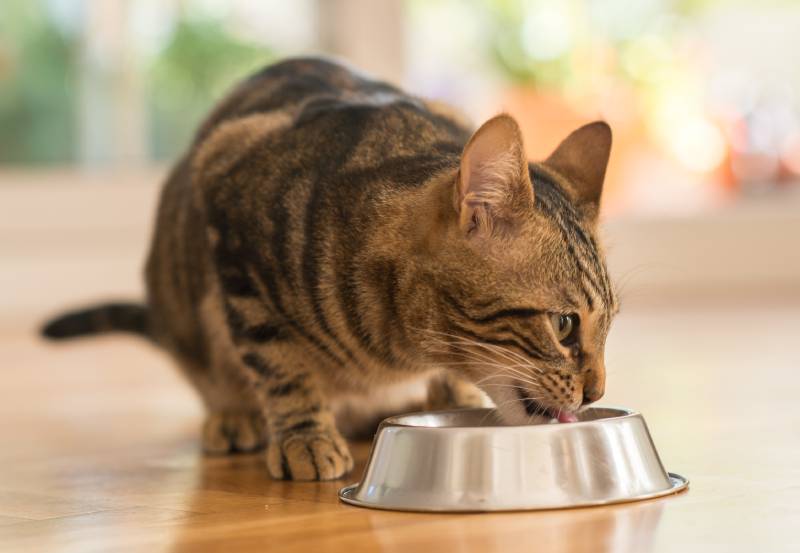Scallops are a delicacy loved by many people. Their flavorful goodness may even make your cat stare at you longingly, begging for a bite. But is it safe for cats to eat scallops? The answer is yes, it is safe for cats to indulge in this tasty treat. Here’s everything you need to know about giving scallops to your feline friend.
Can Cats Eat Scallops?
Yes, cats can eat scallops as they are a non-toxic food for them. However, it’s important to note that cats should only be given fully cooked scallops. Raw scallops carry a high risk of salmonella and other parasites. To ensure your cat’s safety, make sure any scallops you offer are fully cooked and not expired. If the scallops smell off, it’s best to avoid giving them to your cat.
Are Scallops Good for Cats?
When given in moderation, scallops can be a healthy addition to your cat’s diet. They are a great source of lean protein and healthy fats, particularly omega-3 fatty acids. Scallops also provide essential nutrients such as vitamin B12, potassium, zinc, magnesium, iron, phosphorus, selenium, copper, iodine, and choline.
However, it’s important to note that raw scallops contain thiaminase, an enzyme that can break down thiamine (vitamin B1) and prevent its absorption by the body. This can lead to a thiamine deficiency in cats, causing dangerous symptoms like seizures and convulsions. Raw scallops also pose the risk of food-borne illnesses such as salmonella and E. coli. To keep your cat safe, it’s best to avoid offering raw scallops altogether.
How Many Scallops Can I Give My Cat?
It’s recommended to offer scallops to your cat no more than once or twice a week. While nutrient-dense, there are other food options that contain all the necessary nutrients for your cat’s health. A few bite-sized pieces of scallop meat are sufficient for your cat’s needs. Remember, cats have lower calorie needs compared to humans, and a single scallop contains approximately 35 calories, accounting for 10% or more of a cat’s daily caloric intake.
Moreover, scallops are filter feeders, consuming microparticles from the water. This means they filter through large amounts of water per day relative to their small size, making them at risk of accumulating heavy metals like lead, mercury, cadmium, and arsenic. Feeding large quantities of scallops to your cat can lead to the accumulation of these heavy metals over time, resulting in serious illness. Farmed scallops generally have a lower risk of heavy metal accumulation compared to wild-caught scallops.

Image Credit: Krakenimages.com, Shutterstock
Frequently Asked Questions
Can cats eat raw scallops?
No, cats should not eat raw scallops. Raw scallops can carry a high risk of salmonella and other parasites. It’s essential to fully cook scallops before offering them to your cat.
How often can I give my cat scallops?
It’s best to offer scallops to your cat no more than once or twice a week. Remember to consider your cat’s daily calorie needs and feed small quantities at a time.
Are scallops a primary source of protein for cats?
No, scallops should not be the primary source of protein in your cat’s diet. There are other food options that provide all the necessary nutrients for your cat’s health.
Can cats have a thiamine deficiency from eating scallops?
Yes, raw scallops contain thiaminase, an enzyme that can break down thiamine and cause a deficiency in cats. Thiamine deficiency can lead to dangerous symptoms such as seizures and convulsions.
Conclusion
Scallops can be a delicious and nutritious treat for your cat. However, they should only be offered in small quantities and as an occasional treat, not as a primary protein source. Cooking the scallops is crucial to ensure your cat’s safety, as raw scallops can lead to thiamine deficiency and food-borne illnesses.
Scallops provide multiple nutrients and are a great source of lean protein and omega fatty acids, which support various aspects of your cat’s health, including their brain, eyes, skin, coat, muscles, and joints. They also contain essential vitamins and minerals necessary for your cat’s well-being. Remember to limit your cat’s scallop intake to once or twice a week and consult your cat’s veterinarian for their daily calorie needs.
Scallops can make a wonderful addition to your cat’s treat rotation. By using them as part of a variety of treats, you can save money and prevent accidentally overfeeding scallops to your cat. Keep in mind that introducing any new food to your cat always carries the risk of stomach upset, so monitor their reaction carefully.
See Also:
Featured Image Credit: meineresterampe, Pixabay

